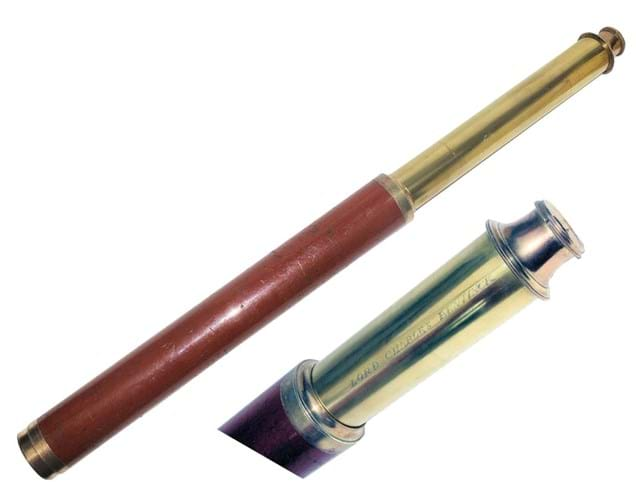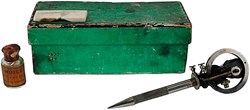They go back to Lovji Nusserwanjee Wadia, who advanced the Wadia shipbuilding dynasty in 1736, when he obtained a contract from the British East India Company for building docks and ships in Bombay.
Dhunjeebhoy was the second son of Rustomjee Maneckjee (1766-1812), who was master builder at Mazagon Dock, Bombay c.1801. Born in 1799, Dhunjeebhoy built three ships in Cochin, south Goa; two for Bengal and the Oriental for Bombay.
In 1834 he returned to Bombay but three years later he moved to Calcutta and worked first in the Howrah Dock and then Kidderpore as master builder. He married the daughter of the Kidderpore Dockyard owner (Rustomjee Cowasjee) and built the Syren, the Framjee Cowasjee and the Rustomjee.
He returned to Mazagon (Bombay) in 1842 to become master builder in the Moghul Dock and stayed as such for P&O until his death in 1854.
The slide rule is a unique silver presentation piece from 1840. It is available from dealer Chris Madden, based in Blackpool, priced at £4950, via the fleaglass.com portal for antique scientific instruments, medical instruments and early technology.
It measures 12in (30cm) in length and folds out to 2ft (60cm) with brass hinge and tips to the ends, various measurements either side, engraved ship motif, engraved scales to the edges and inner slider.
The slide rule is signed in script: Presented to Dhunjeebhoy Rustomjee Esq’r, Master Builder in the Service of the Calcutta Docking Company in testimony of his high merit in building our Ship FRAMJEE COWASJEE of 950 Tons burthen, launched this day the 11th of November 1840 from Kidderpore Dock Yard. RUSTOMJEE COWASJEE & Co.
Rustomjee Cowasjee was born in Bombay in 1792. He came to Calcutta in 1812. Also known as Rustomjee Cowasjee Banaji, he was the first Indian to venture into partnership with the British.
Rustomjee Cowasjee & Co owned about 40 ships. Half the ships were chartered by the British Government from 1839 onwards for war purposes.
Remarkable owner
Also pictured is another object with a notable provenance, which Madden has sold. The large single draw, mahogany barrel telescope is signed near the eye-piece Dollond, London. Day or Night and also engraved LORD CHARLES BENTINCK.
The telescope, 20¼in (51cm) when closed or pulled out to 2ft 11in (88cm), was priced at £630.
The engraving referred to Lord William Charles Augustus Cavendish-Bentinck (1780-1826), a soldier and politician.
Bentinck was the third son of Prime Minister William Cavendish-Bentinck, 3rd Duke of Portland, and Lady Dorothy, only daughter of Prime Minister William Cavendish, 4th Duke of Devonshire.
His remarkable life encompassed a first marriage to Georgiana Augusta Frederica Seymour, daughter of the courtesan Grace Elliott. Georgiana was said to be a daughter of the Prince of Wales or of the 4th Earl of Cholmondeley.
The union allowed Bentinck to become Treasurer of the Household in 1812, a position he held until he died despite a notorious divorce and subsequent remarriage.
In 1815 Bentinck eloped with his mistress, Anne, Lady Abdy, natural daughter of Richard Wellesley, 1st Marquis Wellesley (Governor General of India 1798-1805 and elder brother of the Duke of Wellington).
Anne and Bentinck were married in 1816 and had four children. A daughter from his first marriage was raised after Georgiana’s death by Lord Cholmondeley.
















